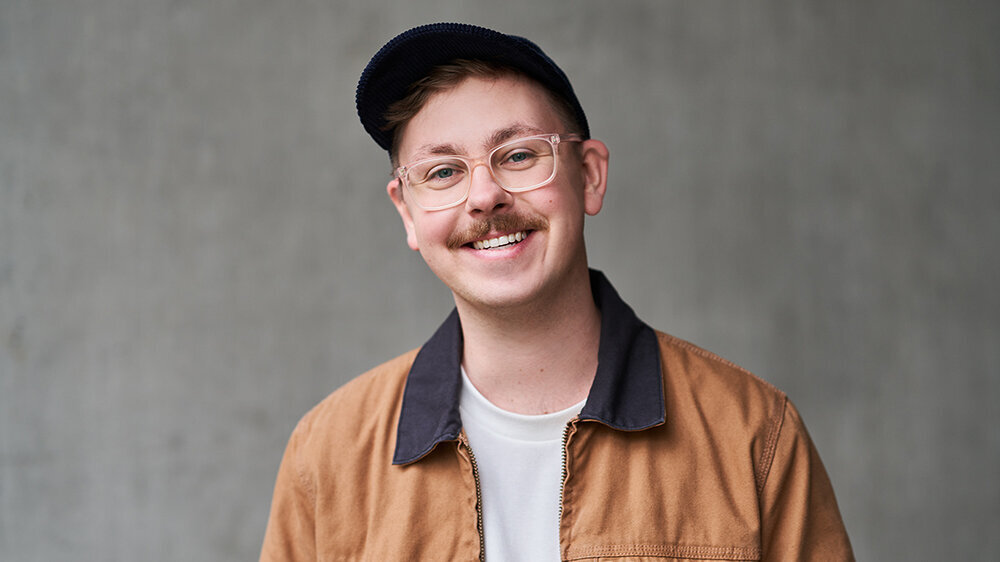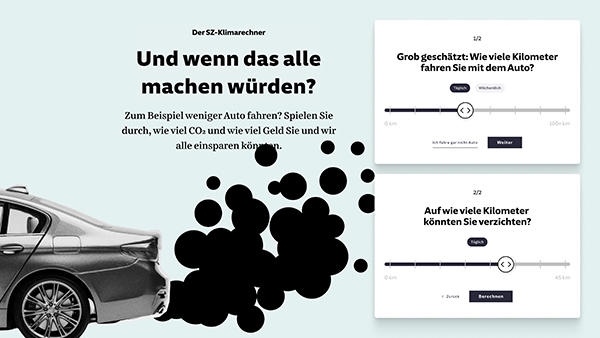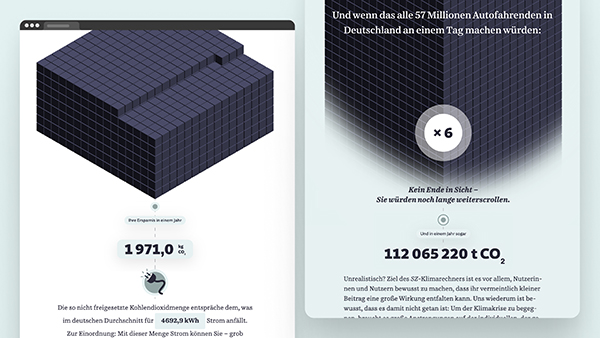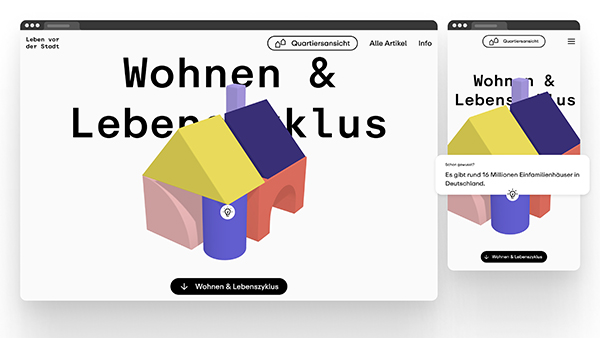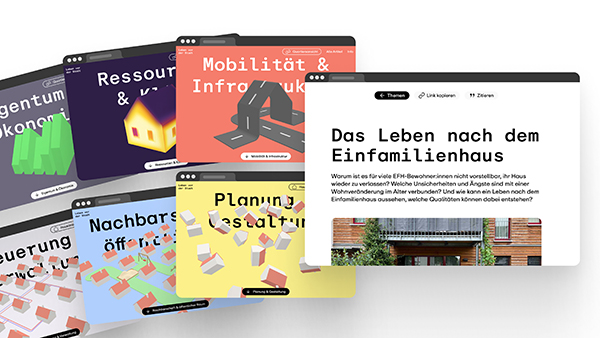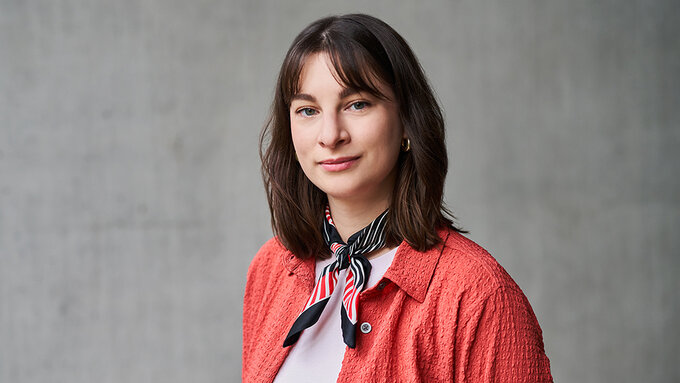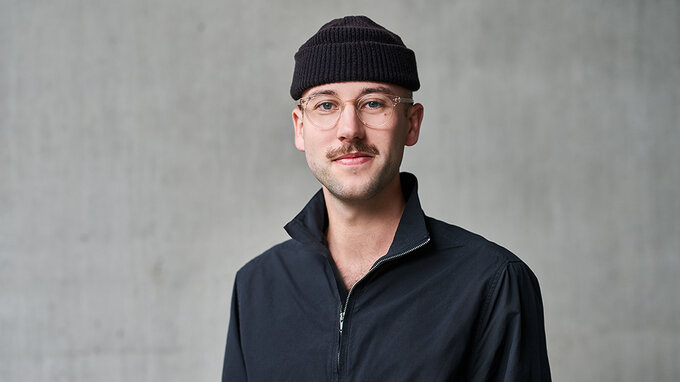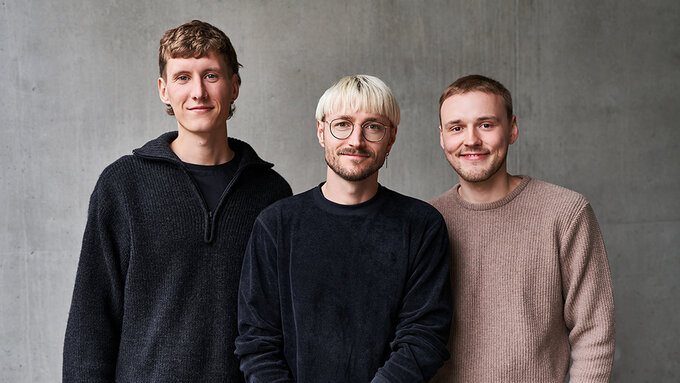Sebastian Winter
Sebastian Winter was born in Stuttgart in 1996. Before he began studying media design at DHBW Ravensburg in 2017, he completed an apprenticeship as a graphic designer at the Johannes-Gutenberg vocational college in Stuttgart. In 2016, Winter began working as a trainee developer at Strichpunkt Design in Stuttgart, which accompanied him as a partner from the start of his dual study programme until his graduation in 2020. In 2020, Winter focussed on interaction design at Strichpunkt Design. He has been working as a freelance Interaction Designer & Creative Developer since December 2022. Since 2021, he has also been teaching interface design and creative coding in seminars and workshops at the HBK Essen, and currently also at the DHBW Ravensburg and the Bauhaus University Weimar on interface design. Sebastian Winter's work aims to make complex content as accessible as possible, especially in the fields of education and science. The designer uses creative coding to promote interaction and open up a dialogue.
Interview with Sebastian Winter
What does it mean for you and your work to be a finalist for the "German Design Award 2024 - Newcomer"?
For now, the award confirms me in my work. It encourages me even more for the future and to trust in my own path.
What are the foundations of your work as an interaction designer?
Three principles or theses come to mind: communication design should not be static, but should react to users. Relevant content is essential - collaborations in education and science are a good source for this. Constantly learning new things and passing on your own knowledge - this keeps your own perspective and your work fresh.
You use creative coding to stimulate interaction and open up a dialogue. What fascinates you about this?
Even a simple interaction reinforces the user's perception and thus memorizes it. Personalization, such as the use of location, places the message in the user's immediate context and thus increases the relevance of the information. In contrast to analogue and linear media, the work itself opens up a dialogue with the user. That fascinates me again and again.
A certain focus on awareness issues, both in terms of climate change and social engagement, is recognisable in all your projects. How do you manage to break down complex topics so that they become easily accessible?
I put myself in the perspective of the target group, have experts explain the topic to me and ask them as many questions as I can until they run out of steam. Once everything has been said, the information is sorted into different levels: The first is intended to attract attention and interest, the second provides a quick overview and the third is where interested parties can find all the in-depth information. In this way, the recipients retain the freedom to decide how deep they want to go.
Your work thrives on the interplay of digital tools, experimentation, and illustration. How do you approach projects?
Illustrations and graphics take away my and others' fear of complexity. So I try to find metaphors and then bring them to life with interactivity. I also like the idea of multimedia collage. I collect material and then combine what can be combined.
What do you see as the biggest challenges for you and your work today and in the future in the field of media design?
You have to fight for attention in the midst of a flood of information. At the same time, the need for quality communication is growing. Your own work is likely to become more difficult, but at the same time more valuable. Either way, I'm looking forward to the future.

